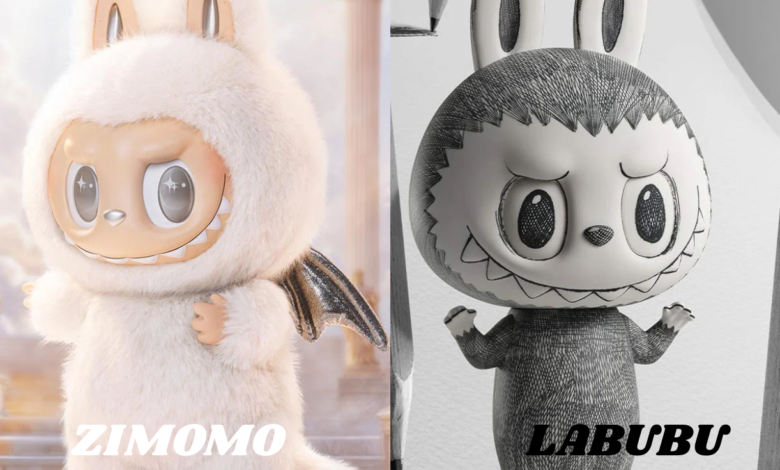Labubu vs Zimomo: What’s the Difference?

Two names have existed dominating collectible toy conversations lately: Labubu and Zimomo. Both figures have captured hearts worldwide accompanying their distinctive designs and due appeal, but many fans find themselves confused about what sets these adorable figures apart.
If you’ve been wondering whether that cute type you spotted is a Labubu or Zimomo, you’re not alone. While both belong to the designer toy universe and share few visual similarities, they emanate different gods and have unique characteristics that form each special in allure in their own right.
What is Labubu?
Labubu is the brainchild of Hong Kong-based inventor Kasing Lung. This mischievous personality first appeared in 2015 and has since become a global wonder. Labubu is characterized by its unique rabbit-like ears, sharp dentition, and playful yet lightly sinister expression.
Pop Mart, the Chinese toy party, has been assisting in bringing Labubu to mainstream fame through their blind box collections and cooperations with major brands like Crocs and various fashion labels.
Understanding Zimomo
Zimomo, on the other hand, is designed by Chinese artist Liu Jia under the brand Seulgie. This character arose more recently in the due scene and features a clearly different beautiful approach. Zimomo has a rounder, more geometric design with a focus on clean lines and minimal features.
See also: The Essential Guide to Healthcare Compliance Software
Key Differences Between Labubu and Zimomo
Design Philosophy
Labubu embraces a more complex, folklore-stimulated aesthetic with elaborate details and verbalization variations. Zimomo focuses on minimalist design law with clean, lines shapes and subtle emotional expressions.
Character Expression
The most obvious difference lies in their first expressions. Labubu typically displays sharp dentition and a playful, sometimes devilish look, while Zimomo maintains a calm, serene verbalization that conveys tranquility and harmony.
Size and Proportions
Labubu figures tend to have more different proportions depending on the succession, with some versions featuring elongated ears or overstated features. Zimomo maintains more agreeing, rounded proportions across various releases.
Market Presence
Labubu has achieved broader worldwide recognition and commercial boom, particularly through Pop Mart’s distribution network. Zimomo, while increasing in popularity, debris more niche and is often sought after by collectors who enjoy its artistic, restricted-release approach.
Cultural Background
Labubu draws from European folklore and fairy yarns, giving it a slightly satanic, more mystical backstory. Zimomo’s cultural influences are more existing and minimalist, reflecting up-to-date design sensibilities and Eastern aesthetic principles.
Why the Confusion?
The disorientation between these characters frequently stems from their shared presence in the designer toy market and their similar target audience. Both attract collectors who acknowledge artistic, limited-program figures, and both have cute, accessible designs that photograph well for social media.
Making Your Choice
Whether you’re tense to Labubu’s playful complexity or Zimomo’s calm simplicity often worsens to personal aesthetic preferences. Labubu might appeal more to collectors, the one who enjoys characters with rich backstories and varied expressions, while Zimomo could attract those who prefer clean, minimalist design and clever emotional depth.
